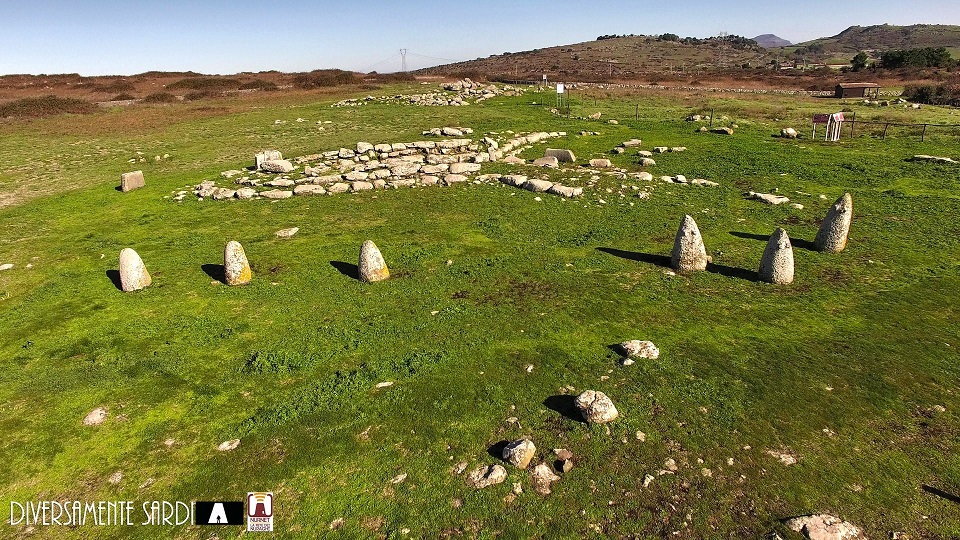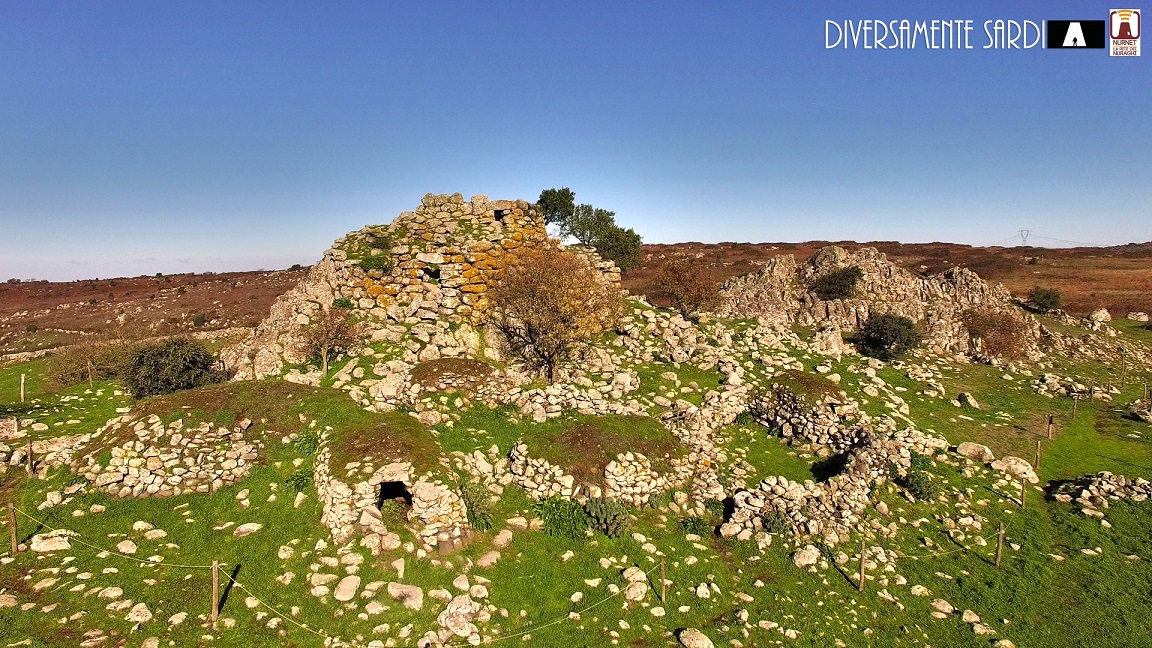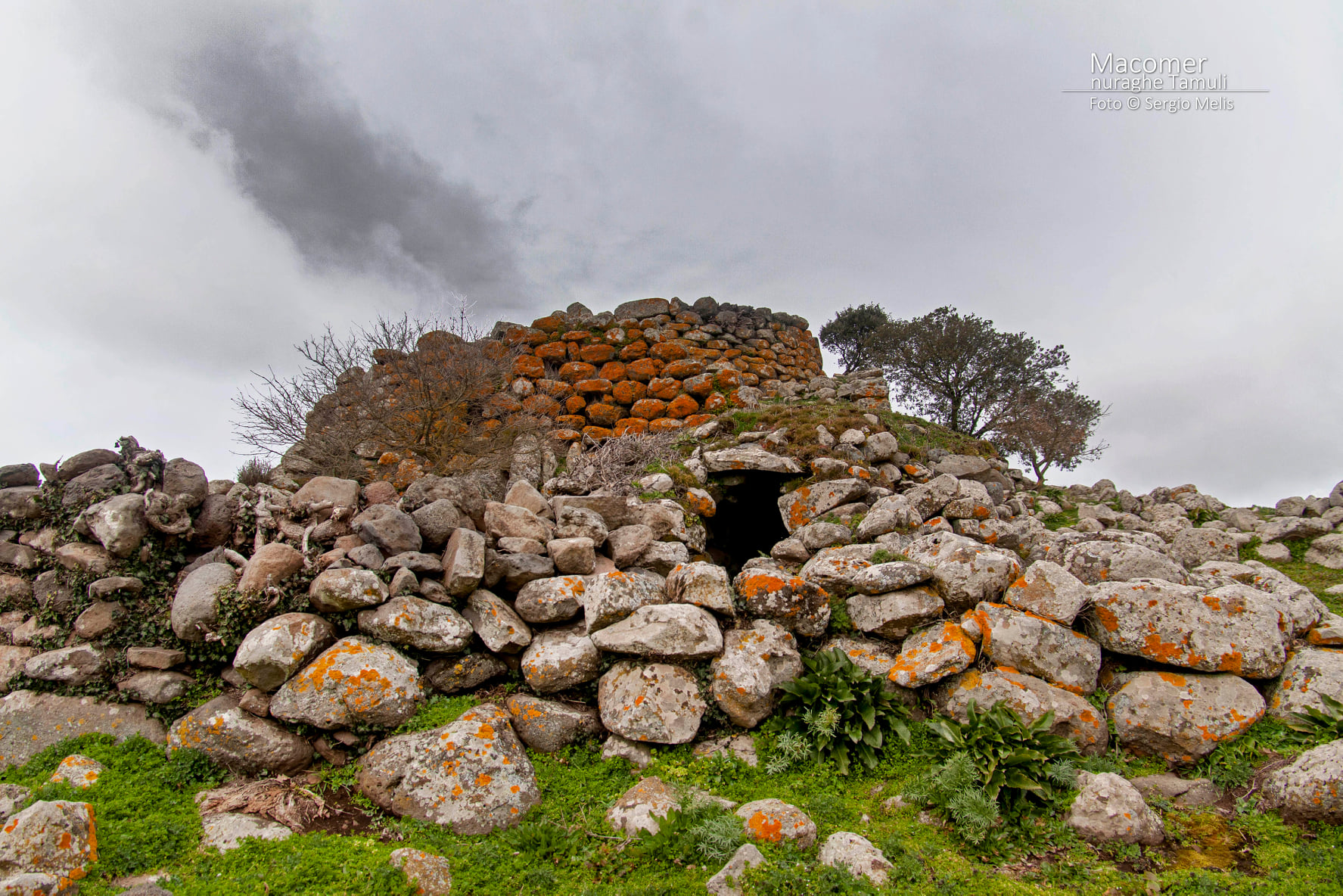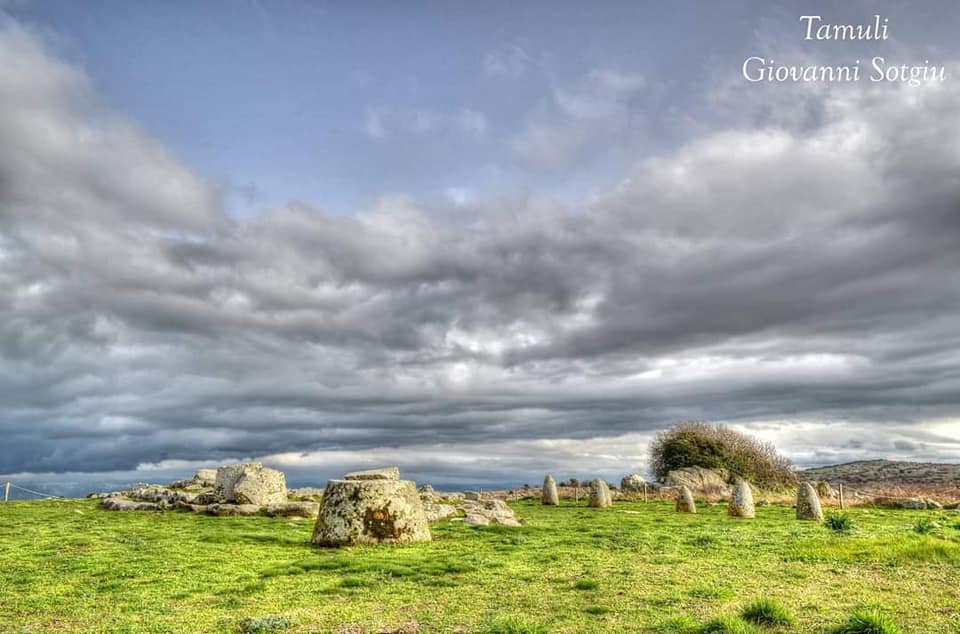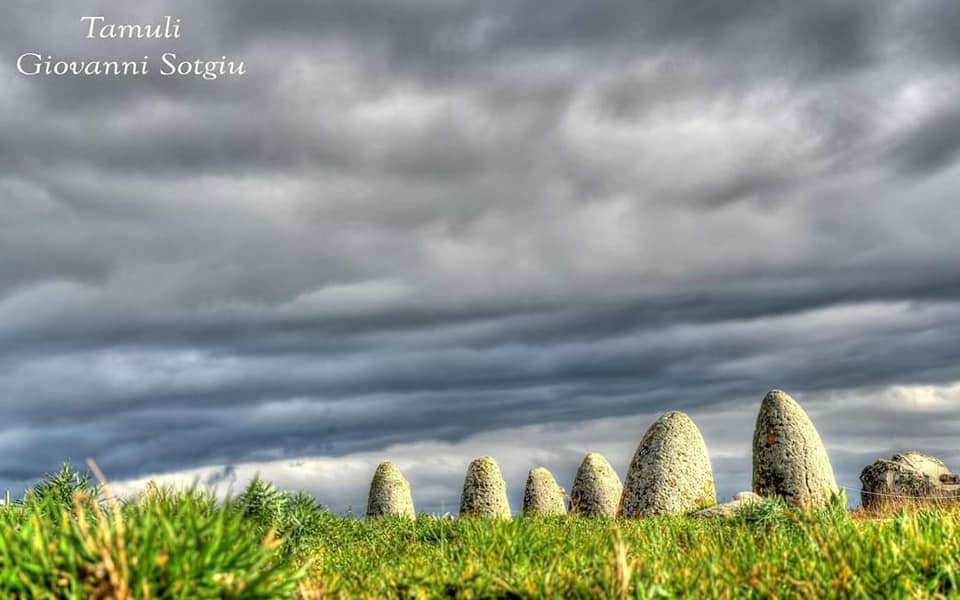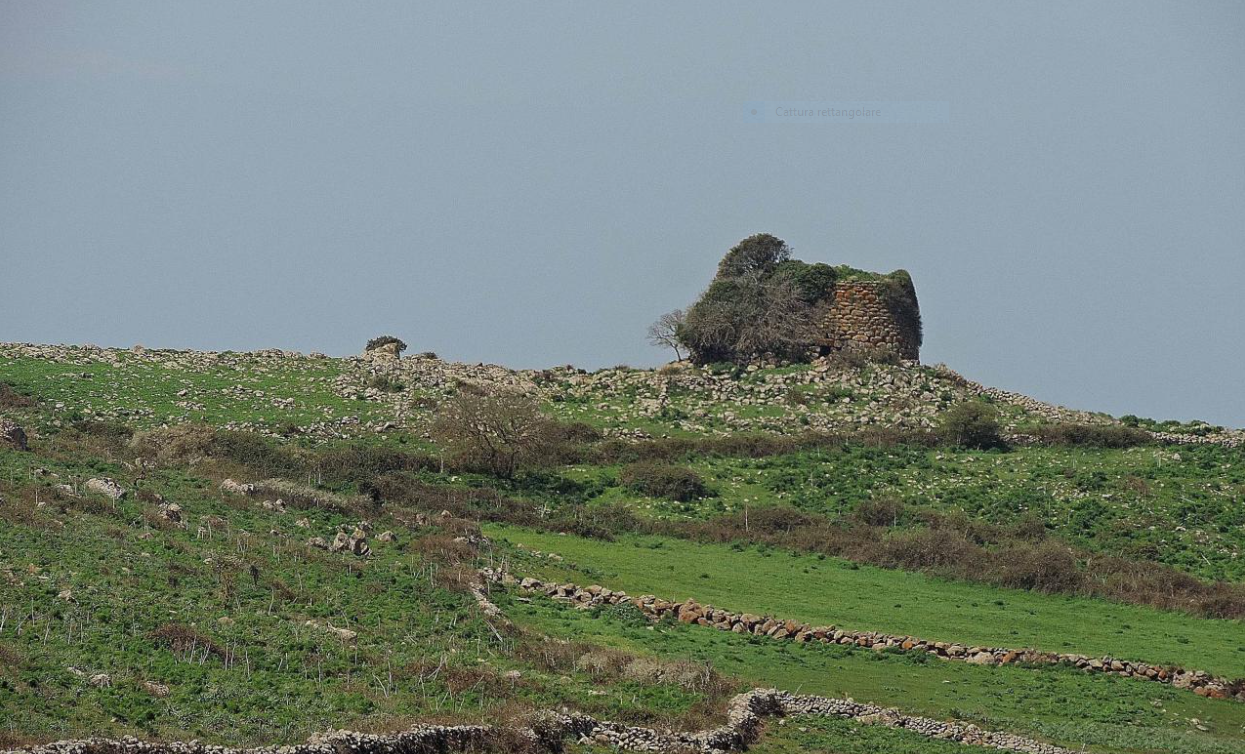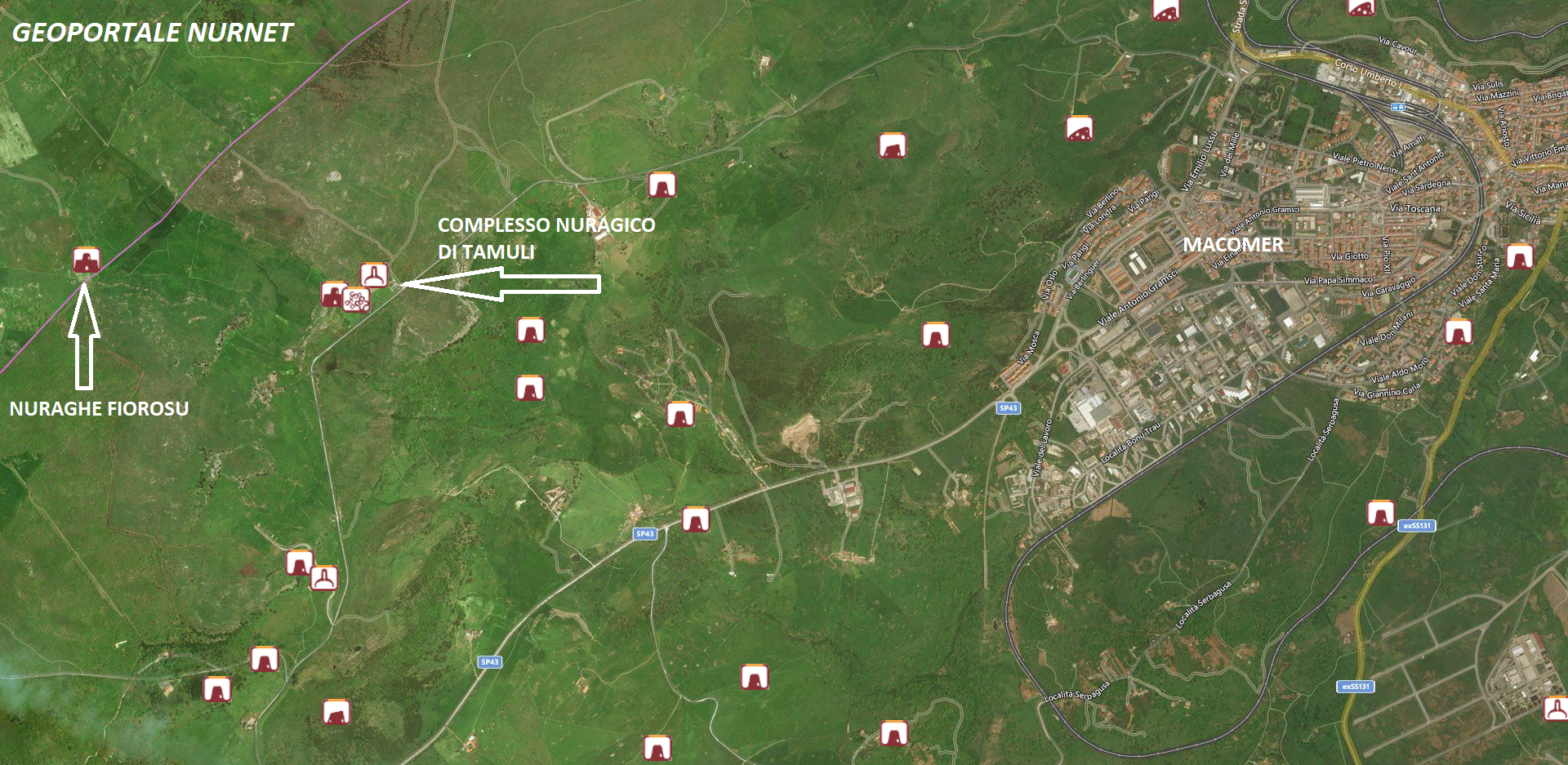10 e: The archaeological area of Tamuli, located in the territory of Macomer, includes three giant tombs, a nuraghe, and a village, dating back to the Middle and Recent Bronze Age (XVI-XIII century B.C.).
“Among the tombs, the most important is tomb I. In good state of preservation, it features a wide exedra, still intact, at the center of which is the entrance to the burial chamber, consisting of a perforated trapezoidal slab. Along the semicircle of the exedra, there is a bench made of 27 blocks… Along the left side of the tomb, six conical betili are arranged. The three largest cippi, equipped with two protuberances shaped like breasts, represent the female element; the other three, completely smooth, symbolize the male phallic element… The nuraghe, located a short distance away on a rocky outcrop, is of a complex type, consisting of a central circular tower and a bastion that originally enclosed two towers. In the nearby village, six huts with an elongated oval plan and a roof made of flat slabs are still perfectly intact.” (Mibact)
The nuraghe Fiorosu, located on the border between Sindia and Macomer, is about 1000 meters from the important archaeological area of Tamuli (Macomer). It is a complex nuraghe with a central tower and two partially preserved secondary towers. The main room, circular in shape, has three niches arranged in a cross and retains the intact tholos. Currently, it appears to the visitor ‘protected’ by dense vegetation, of which it is almost completely covered.
The photos of the nuragic complex of Tamuli, in Macomer, are by Giovanni Sotgiu, Sergio Melis, Francesca Cossu, and Diversamente Sardi. Those of the nuraghe Fiorosu in Sindia are by Ggalleri for Wikimapia and Alessandro Pilia. The view of Fiorosu from the complex of Tamuli is by an unidentified author.




